In recent years, Japan has become a popular travel destination attracting tourists from around the world. Well-known attractions like Tokyo’s vibrant streets, Kyoto’s historic temples and shrines, and Okinawa’s beautiful beaches have become widely recognized among international travelers. However, these popular tourist destinations face serious overtourism issues, especially during peak travel seasons.
The concentration of tourists has raised concerns about the impact on local living environments and the preservation of cultural properties. Yet Japan has many more attractive places that are still less visited. These “hidden gems” are perfect options for travelers who want to avoid crowds while experiencing a more authentic Japan.
In this article, we’ll introduce carefully selected hidden gems from across Japan. From lesser-known spots just a short distance from Tokyo or Kyoto to regional attractions that few international tourists know about, we’ll explore places where you can experience Japanese culture and nature deeply without being bothered by overtourism.
- Tohoku Region: Natural Beauty and Traditional Culture
- Chubu Region: Hidden Scenic Spots in Mountainous Areas
- Shikoku Region: A Blend of History and Nature
- Kyushu & Okinawa Regions: The Mystery of Volcanoes and Islands
- Tips and Services for Traveling to Japan’s Hidden Gems
- Conclusion: A Journey to Discover the True Japan
- Additional Information: More Hidden Scenic Spots in Japan
Tohoku Region: Natural Beauty and Traditional Culture
Ginzan Onsen, Yamagata Prefecture

The fantastical hot spring town with Taisho-era romantic atmosphere is known as a hidden retreat in Yamagata Prefecture. The hot spring district, lined with wooden buildings from the Taisho era, is particularly impressive with its winter snow scenery and night views illuminated by gas lamps. The nostalgic atmosphere created by the retro ryokan (Japanese inns) along the river gives visitors the feeling that time has stopped.
Ginzan Onsen developed as a mining town that once flourished with silver mining. Its history dates back more than 400 years, and historical sites from that era are scattered around the hot spring district. There’s a theory that it was one of the models for the movie “Spirited Away” by Hayao Miyazaki, and its dreamlike atmosphere attracts many photography enthusiasts.
If you visit on weekdays when there are relatively few tourists, you can quietly enjoy the hot springs and the historic townscape. The surrounding natural environment is also attractive, with hiking trails that offer seasonal scenery throughout the year.
Oirase Stream and Lake Towada, Aomori Prefecture
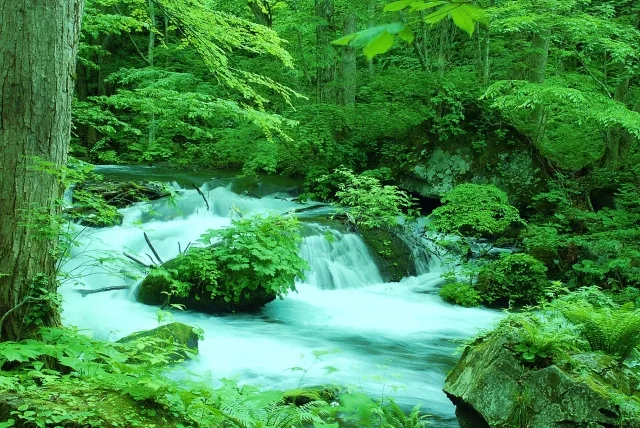
Oirase Stream and Lake Towada in Aomori Prefecture are among Japan’s most beautiful natural landscapes. They are particularly breathtaking during the fresh green season and autumn foliage period. The Oirase Stream flows for about 14 kilometers, starting from where the water flows out of Lake Towada.
Walking along the trail beside the stream, you can observe 14 waterfalls of various sizes and diverse plant life. There are many scenic spots along the way, such as “Shirakumo no Taki” (White Cloud Falls) and “Ashura no Nagare” (Ashura’s Flow), making it ideal for leisurely nature walks.
Lake Towada is known as a double caldera lake with a mystical quality. There are attractions around the lake, including Towada Shrine and the “Maiden Statue.” You can also tour the lake by sightseeing boat to enjoy its beauty from different angles.
This area is relatively accessible within the Tohoku region, yet the number of international tourists is still not very high. You can access it by rental car or by combining public transportation options.
Kakunodate, Akita Prefecture
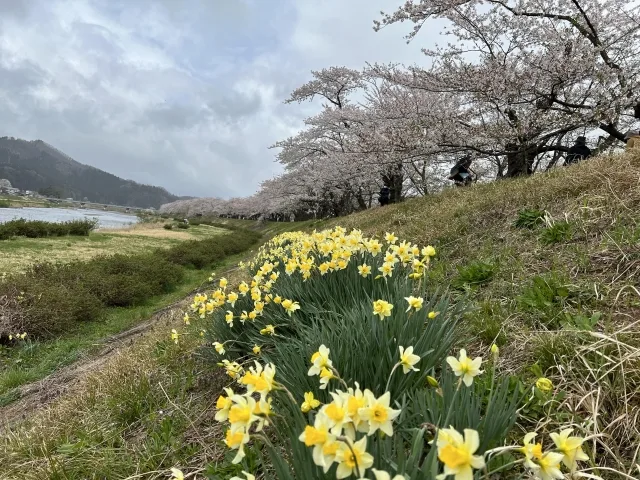
Kakunodate, a castle town known for its samurai residences and beautiful cherry tree-lined streets, is a small town in Akita Prefecture. It flourished as a castle town of the Ashina clan, a branch of the Satake clan, during the Edo period, and the “Samurai District” where samurai residences were lined up is still preserved today.
In spring, about 400 weeping cherry trees (shidarezakura) create a spectacular view against the black board fences of the samurai residences. Called the “Little Kyoto of Michinoku,” this town offers a historical atmosphere to enjoy in any season.
Some of the samurai residences are open to the public, allowing visitors to see the lifestyle and architectural style of the time up close. There are also workshops for “kabazaiku” (cherry bark craft), a traditional craft in the area, where you can see and purchase beautiful crafts made from cherry tree bark.
Kakunodate can be accessed by taking the Tohoku Shinkansen to Akita and then transferring to a local line. Although it’s only about 3.5 hours from Tokyo, it’s not yet well-known as an international tourist destination, making it a place where you can leisurely experience Japanese history and culture.
Chubu Region: Hidden Scenic Spots in Mountainous Areas
Tojinbo, Fukui Prefecture
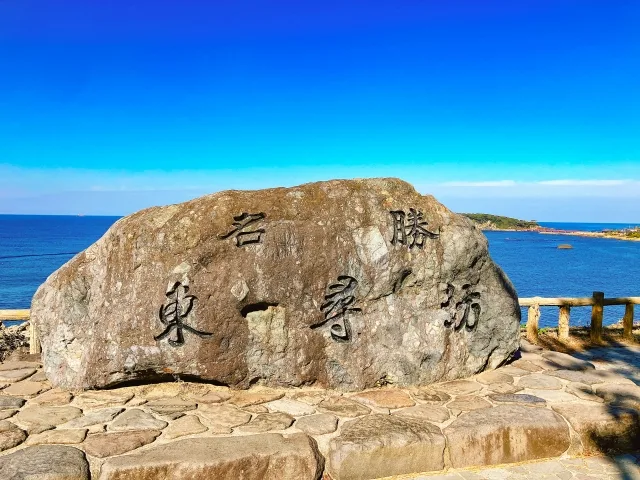
Tojinbo, a series of cliffs facing the Sea of Japan in Awara City, Fukui Prefecture, is a scenic spot designated as a national natural monument. The columnar jointed rock walls extending for about 1 kilometer along the rugged Sea of Japan are an impressive sight.
These columnar joints were formed by andesite created during volcanic activity about 12 million years ago, and they cooled to form a unique landscape that is rare worldwide. The cliffs are about 25 meters high, and the sight of waves crashing against the rocks gives a sense of nature’s power.
Around Tojinbo, you can also take a sightseeing boat to view the cliffs from the sea. There are also tourist facilities nearby, such as the Echizen Matsushima Aquarium and Tojinbo Tower, making it a spot where you can enjoy a full day of activities.
Extension work is underway on the Hokuriku Shinkansen to Fukui Prefecture, which will improve access in the future, but for now, it’s still a “hidden gem” for international tourists. The contrast between the rugged waves of the Sea of Japan and the cliffs is particularly beautiful at sunset.
Gokayama Gassho-style Village, Toyama Prefecture
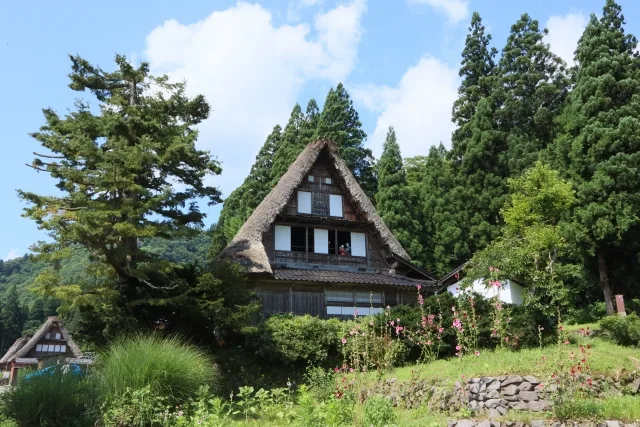
Gokayama, a World Heritage-listed village with Gassho-style houses is located in Nanto City, Toyama Prefecture. It is registered as a World Cultural Heritage site along with Shirakawa-go, but is less well-known and receives fewer visitors than Shirakawa-go.
The steep thatched roofs characteristic of Gassho-style houses are the crystallization of wisdom adapted to life in a heavy snowfall area. There are two main Gassho-style villages in the area, Suganuma and Ainokura, both of which preserve the old mountain village lifestyle.
In Gokayama, you can stay at Gassho-style minshuku (guest houses), taste local traditional cuisine, and experience traditional crafts such as Japanese paper making and Japanese confectionery making. In winter, the Gassho-style houses against a backdrop of snow create a fantastical landscape.
Access is a bit inconvenient, but you can get there by bus from Kanazawa (about 2 hours) or by taking a combination of trains and buses from Toyama. Because there are fewer visitors, it’s a valuable spot where you can leisurely enjoy Japan’s traditional rural landscape.
Kamikochi, Nagano Prefecture
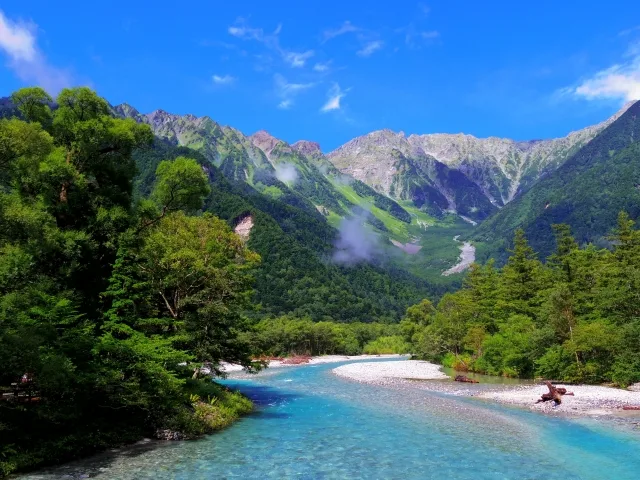
Kamikochi, known as the gateway to the Japanese Alps, is a valley in Matsumoto City, Nagano Prefecture, designated as a special scenic spot and special natural monument of Japan. Located at an altitude of about 1,500 meters, this area is a natural treasure surrounded by mountains such as the Hotaka Range and Mt. Yakedake.
In Kamikochi, you can enjoy the scenery of magnificent mountains while walking along the trail along the clear stream of the Azusa River. The view of the Hotaka Range from the famous “Kappa Bridge” is spectacular. The view of Mt. Yakedake from Taisho Pond is also beautiful and popular as a photography spot.
To protect the environment, private vehicles are not allowed in this area. You need to access it by bus or taxi from Matsumoto or Shinshimashima, but this helps preserve the natural environment and allows you to enjoy hiking in a quiet environment.
Kamikochi is only accessible during the summer season (from late April to mid-November) and is closed in winter. Although it’s crowded with Japanese tourists during peak tourism seasons, if you visit on weekdays or in the early morning or evening, you can enjoy nature in relative quiet. There are also accommodations around the area, such as the Kamikochi Imperial Hotel, where you can experience the tranquility of morning and evening.
Shikoku Region: A Blend of History and Nature
Shimanto River, Kochi Prefecture
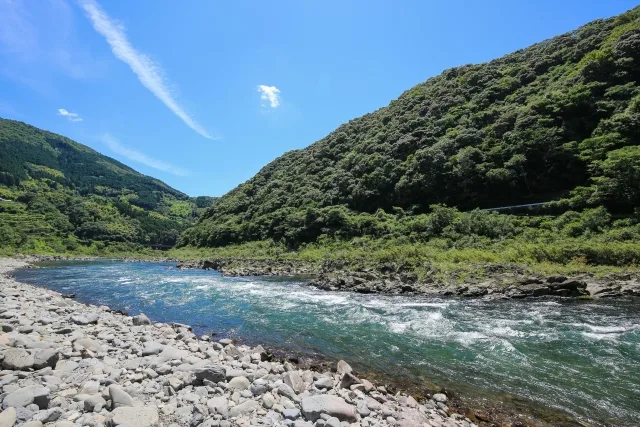
The Shimanto River, known as “Japan’s last clear stream,” is a first-class river with a total length of 196 kilometers flowing through western Kochi Prefecture. Its basin preserves rich nature where diverse flora and fauna live.
The charm of the Shimanto River lies in its highly transparent water quality and the untouched natural environment around it. Many of the old fishing methods, such as “chinkabashi” (submersible bridges), remain along the river. These bridges are designed to submerge underwater during floods, blending into the landscape.
You can enjoy water activities such as canoeing and stand-up paddleboarding (SUP) on the Shimanto River. There are also cycling roads maintained along the river, allowing you to enjoy the surrounding nature by bicycle.
Access from Kochi City is somewhat inconvenient, but you can easily visit by rental car. There are also plenty of accommodations in Shimanto City, where you can enjoy local dishes using river fish and other local ingredients. There are not yet many international tourists, making it a perfect place for those who want to quietly experience Japanese nature.
Uchiko Town, Ehime Prefecture
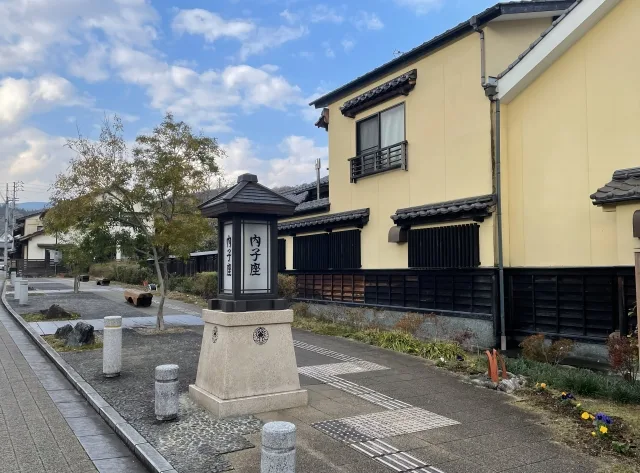
Uchiko Town, known for its historic townscape with traditional buildings, is located in the central part of Ehime Prefecture. It has a history of prosperity in Japanese paper and wood wax industries from the Edo period to the Meiji era, and the merchant houses and townscape from that time are still well-preserved today.
In particular, the “Yoichi and Gokoku district” is designated as an Important Preservation District for Groups of Traditional Buildings, offering a tasteful landscape with white-walled storehouses and latticed merchant houses. The Uchiko-za is a wooden theater built in the Meiji era that is still used for performances today, cherished as a living cultural property.
In Uchiko Town, you can learn about the former industries and lifestyles at facilities such as the Kamihaga Residence Wax Museum and the Uchiko Town Townscape Museum. There are also workshops where you can experience making traditional crafts, and cafes using local ingredients scattered throughout the town.
You can access it by train or bus from Matsuyama City in about 1 hour, but there are still few international tourists, allowing you to leisurely stroll through the historic townscape. It’s also recommended to visit in combination with other tourist spots in Shikoku.
Iya Valley, Tokushima Prefecture

The Iya Valley (Iyakei), counted as one of Japan’s three major secluded regions, is a deep gorge in western Tokushima Prefecture. Surrounded by steep mountains, this region is said to have been inhabited by refugees from the Taira clan, and unique cultures and traditions remain to this day.
The main attraction of the Iya Valley is the “Kazurabashi” (vine bridge), which is designated as an Important Tangible Folk Cultural Property of Japan. This suspension bridge, made by weaving vines from the Shirakuchi Kazura plant, maintains the tradition of being rebuilt every three years. There is a gorge about 14 meters deep below the bridge, offering a thrilling experience.
In addition, there are villages like “Ochiai Village” where thatched-roof houses dot the mountainside, offering a landscape that can be described as an original Japanese scene. Furthermore, at Iya Onsen, you can enjoy hot springs surrounded by nature, such as the open-air bath “Togenkyo no Yu” along the river.
You can access it by taking a combination of buses and trains from Tokushima Station, but using a rental car is more efficient for touring around. Although it’s not yet well known to international tourists, it’s definitely a spot worth visiting for those who want to experience Japan’s secluded regions.
Kyushu & Okinawa Regions: The Mystery of Volcanoes and Islands
Mt. Aso, Kumamoto Prefecture
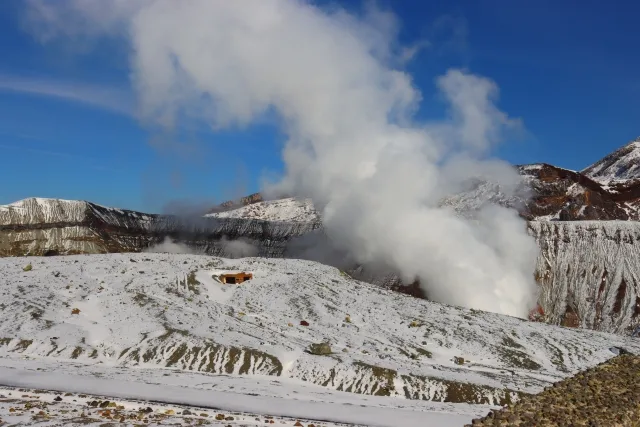
Mt. Aso, with one of the world’s largest calderas, is an active volcano located in the central part of Kumamoto Prefecture. Inside the caldera surrounded by the outer rim mountains are five mountains collectively called the Aso Five Mountains, among which Mt. Nakadake has an active crater that can be seen even today.
The charm of Aso lies in the dynamic landscape created by the vast grasslands and volcanoes. The view from “Daikanbo” in particular is spectacular, allowing visitors to overlook the entire caldera. From spring to autumn, the beautiful grasslands of the plateau are also attractive, and activities such as horseback riding and trekking are popular.
In the Aso region, there are unique landforms formed by volcanic activity, such as “Kusasenrigahama,” a grassland on a former crater, and “Komezuka,” a small volcano. Local products from the farms, such as ice cream and dairy products, are also specialties.
Aso can be accessed from Kumamoto City by JR Hohi Main Line or highway bus, but some transportation routes are still under restoration work due to the impact of the 2016 Kumamoto earthquake. However, this region is gradually regaining tourists and is worth visiting. It’s not yet well-known to tourists from Europe and America in particular, and is a valuable spot where you can experience the grandeur of Japanese volcanic terrain.
Yakushima, Kagoshima Prefecture

Yakushima, a mystical island registered as a World Natural Heritage site, is an island with a circumference of about 130 kilometers located in the south of Kagoshima Prefecture. It features virgin forests with Yakusugi cedars thousands of years old and diverse ecosystems created by annual rainfall exceeding 10,000 millimeters.
The most famous tourist spot on Yakushima is the “Jomon Sugi,” a cedar tree estimated to be 7,200 years old. It requires about a 5-hour trek one way, but its magnificent appearance is inspiring. “Shiratani Unsuikyo” is said to have been the model for the setting of Hayao Miyazaki’s “Princess Mononoke,” and it has a mystical “moss forest.”
There are also hot springs on the island, particularly “Hirauchi Kaichu Onsen” along the coast, which is unusual in that it’s only accessible depending on the tide. Another charm of Yakushima is that you can enjoy both mountains and sea, and it’s also famous as a breeding ground for sea turtles.
You can access it from Kagoshima City by plane in about 30 minutes or by high-speed boat in about 2 hours. While there are buses for getting around the island, using a rental car or taxi is more efficient for sightseeing. Although Yakushima’s recognition has risen as a World Natural Heritage site, the number of visitors is still relatively small compared to other major tourist destinations, allowing for a quiet enjoyment of nature.
Iriomote Island, Okinawa Prefecture
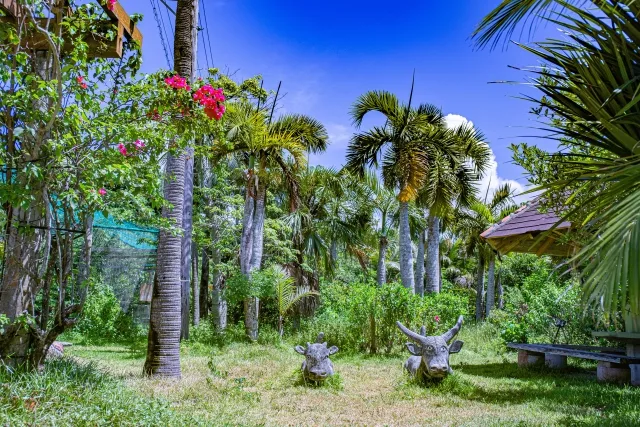
Iriomote Island, located about 400 kilometers southwest of the main island of Okinawa, is the second largest island in Okinawa Prefecture, yet has a population of only about 2,400, with about 90% of the island covered in subtropical virgin forest. Registered as a World Natural Heritage site in 2021, this island truly deserves to be called “Japan’s last secluded region.”
The greatest charm of Iriomote Island is its untouched natural environment. On the Nakama River, which has spreading mangrove forests, river cruises by sightseeing boat or canoe are popular activities. The island also has Japan’s largest mangrove forest and is home to precious wildlife including the endangered Iriomote wildcat.
On the south side of the island, there are beaches known as “Hoshizuna no Hama” (Star Sand Beach) for their star-shaped sand, and beautiful waterfalls like “Pinaisara Falls” that can be reached by trekking. There are also snorkeling and diving spots scattered around, allowing you to enjoy the beautiful coral reef sea.
You can access it by high-speed boat from Ishigaki Island in about 40 minutes, and day trips are possible, but it’s recommended to stay for at least one night to fully enjoy the island’s charms. As public transportation is limited, it’s convenient to join a tour or use rental cars or taxis. Even after being registered as a World Natural Heritage site, efforts for environmental conservation continue, and it’s attracting attention as a sustainable tourist destination.
Tips and Services for Traveling to Japan’s Hidden Gems
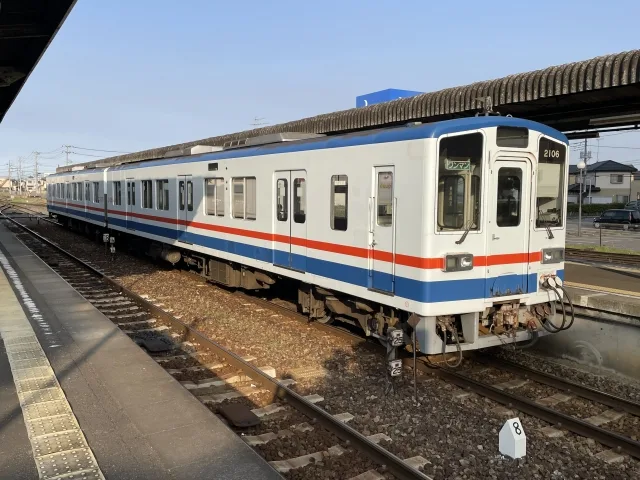
Efficient Transportation Methods
When visiting Japan’s hidden gems, the Japan Rail Pass (JR Pass) is very convenient. This pass, exclusive to foreign tourists, allows unlimited rides on most JR lines for periods of 7, 14, or 21 days. Since you can also use the Shinkansen, access to remote areas becomes easy.
There are also unique regional passes in local areas, such as the “Tohoku Pass” or “Hokkaido Rail Pass.” Using these can significantly reduce transportation costs within specific regions.
Rental cars are also a good option. Especially in rural areas where public transportation is limited, the advantage of being able to move freely is significant. If you have an international driving permit, you can rent a car in Japan. Recently, cars with multilingual navigation systems have increased, allowing you to drive without language worries.
Recommended Seasons and Times
When visiting Japan’s hidden gems, choosing the off-season allows you to enjoy the scenery more quietly. Golden Week (late April to early May), Obon holidays (mid-August), and New Year’s (late December to early January) are long vacation periods for Japanese people and are often crowded with domestic tourists, so it’s wise to avoid these times.
On the other hand, June is the rainy season with a lot of rain, but there are relatively few tourists, and it’s also the season when hydrangeas bloom beautifully. Also, from late November to early December, after the peak of autumn leaves, there are fewer people but you can still enjoy beautiful scenery.
In winter (December to February), transportation may be affected, especially in snowy areas like Tohoku and Hokkaido, but it’s the optimal season for enjoying snow scenery and hot springs. Winter events such as snow festivals are also attractive.
Services to Enrich Your Accommodation Experience

For a traditional Japanese accommodation experience, farmhouse minshuku or old Japanese house stays are recommended. At these accommodations, you can interact with locals and may be able to experience farming or traditional crafts. You can book such experiential accommodations on platforms like “STAY JAPAN” or “Airbnb.”
Services called “ittou-gashi” (whole house rental), where you can rent an entire house or villa, are also increasing. These are recommended for group travel or for those who prioritize privacy.
In hot spring areas, many ryokan also offer day bathing facilities. You can experience Japanese hot spring culture even without staying overnight, so please try them. In hot spring areas where you can enjoy “sotoyu meguri” (visiting different outdoor hot springs), you can enjoy various spring qualities and atmospheres by visiting multiple hot spring facilities.
Cultural Experience Programs
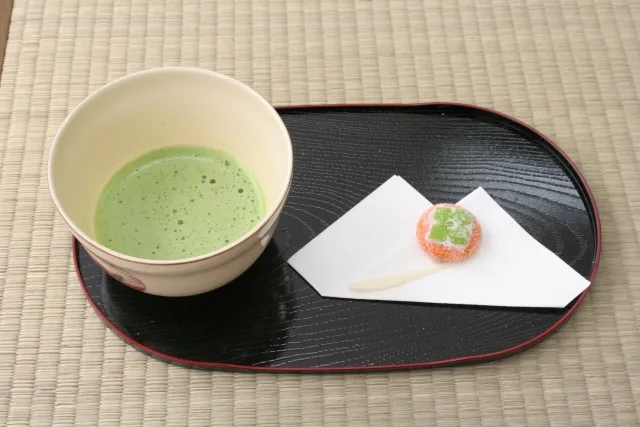
Throughout Japan, there are rich programs where you can experience traditional culture and crafts. For example, you can experience traditional crafts such as Japanese paper making, pottery, indigo dyeing, and woodworking, or cultural experiences such as Zen meditation, tea ceremony, and calligraphy.
Experiential tourism with the concept of “living like a local” is also increasing. By participating in local cooking classes or experiencing fishing or farming, you can gain a deeper understanding of the region’s life and culture.
Especially in small towns and villages in rural areas, such experiential programs are being conducted to promote exchange between tourists and locals. On websites like “Satoyama School” and “Tabimae,” you can search for and book experiential programs from all over Japan.
Conclusion: A Journey to Discover the True Japan
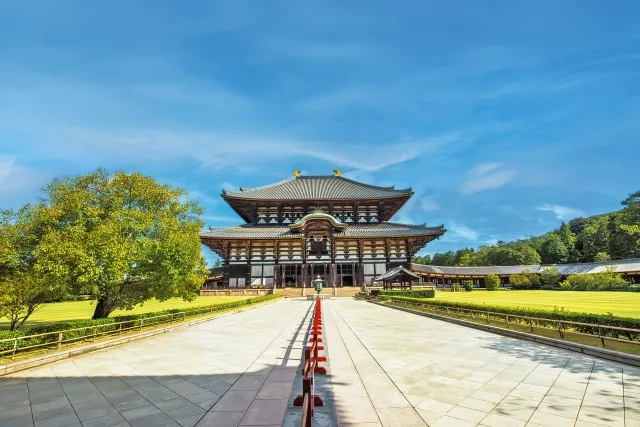
Japan has many attractive places that are still not well-known to many people, beyond popular tourist destinations like Tokyo and Kyoto. By visiting these hidden gems, you can experience more authentic Japanese culture and nature while avoiding crowds.
The places introduced in this article are just a few examples. Throughout Japan, there are attractive spots scattered across the country, such as the nature-rich valleys and hot spring towns of Tohoku, the hidden scenic spots in the mountainous areas of Chubu, the charm of history and nature intertwined in Shikoku, and the mystery of volcanoes and islands in Kyushu and Okinawa.
When visiting these places, it’s important to respect the local culture and nature and to practice sustainable tourism. By valuing interaction with local people and experiencing the unique food and traditions of the area, your journey will become richer.
In this era when overtourism is becoming a problem, why not set out on a journey to explore Japan’s hidden charms by extending your trip just a little further? You’re sure to create your own special memories of Japan.
Additional Information: More Hidden Scenic Spots in Japan
In addition to the places introduced above, there are still many more “hidden scenic spots” in Japan. Here are some additional spots that are gaining attention in this age of social media.
Cape Kamui, Shakotan Peninsula, Hokkaido

Cape Kamui at the tip of the Shakotan Peninsula is a scenic spot characterized by a 80-meter high cliff. “Kamui” means “god” in the Ainu language, and it has been cherished as a sacred place since ancient times. Due to its shape protruding into the Sea of Japan, you can feel the vastness of the sea more closely, which is part of its charm.
Especially in the summer season, the transparent blue sea known as “Shakotan Blue” spreads out, creating a beautiful landscape with the contrast between the green cape. The hiking trail to the cape, “Charenka no Michi,” also allows you to enjoy the majestic scenery typical of Hokkaido.
Shima Onsen, Gunma Prefecture
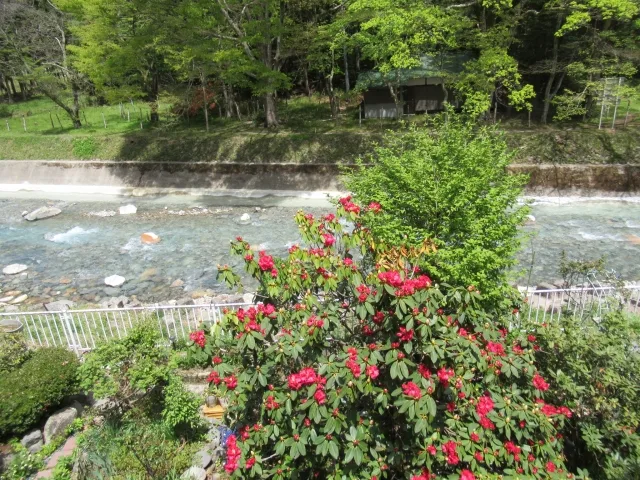
Sekizenkan at Shima Onsen, one of the models for the bathhouse “Aburaya” in “Spirited Away,” features a characteristic red-railed bridge, and after crossing it, you’ll find the wooden main building constructed in the Genroku 4 year (1691).
The hot spring water at Shima Onsen is not only gentle on the skin but is also said to have effects on gastrointestinal issues when drunk. The hot spring inns built along the valley surrounded by mountains are ideal for spending quiet time away from everyday life.
Starry Sky of Achi Village, Nagano Prefecture
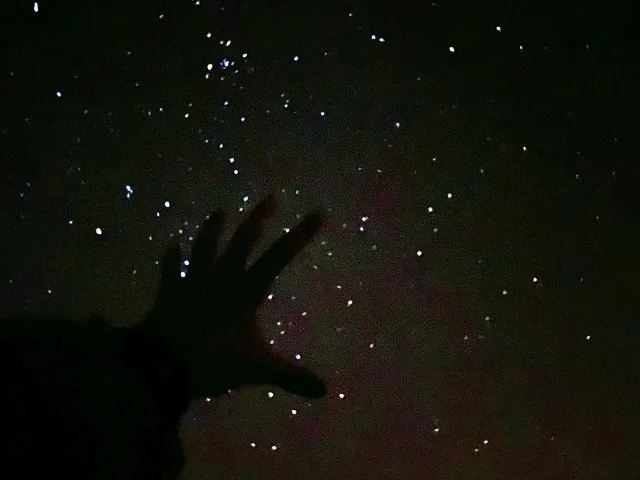
Achi Village, located on the border of Nagano and Gifu Prefectures, is known as the village with the most beautiful starry sky in Japan, having been ranked No. 1 by the Ministry of the Environment as “the place where stars are most brilliantly visible.” The village is at a high altitude with clear air and is surrounded by mountains on all four sides, allowing observation of a beautiful starry sky even with the naked eye.
Particularly recommended is the “Starry Village Achi” night tour, where you take a gondola to the summit. The experience of seeing the Milky Way and shooting stars under a sky full of stars is especially moving for eyes accustomed to light pollution in cities. The best season to visit is on clear nights from spring to autumn.
Ryuo Pond, Muro, Nara Prefecture
A mystical pond located in the mountains at an altitude of 530 meters. Known as a sacred place since ancient times, it is surrounded by a tranquil atmosphere. The highlight is the “water mirror” scenery that appears only on windless, clear days. When the surrounding trees are reflected on the water surface like a mirror, it creates a fantastical atmosphere.
The water mirror is particularly beautiful in the new green season, especially in the early morning hours. There are also scenic spots like the Ryuchin Valley and Aoba Falls nearby, so a day trip course is also recommended.
Takise Coast Shirafura, Ni-shi District, Hokkaido

Takise Coast Shirafura in Ni-shi District, Hokkaido, gets its name “Shirafura” meaning “white slope,” as the name suggests, you can enjoy a magnificent and beautiful white cliff. The white cliff, about 20 meters high, continues for about 500 meters, creating a mystical and magnificent scenery.
As it’s a nature-rich spot, there’s a possibility of encountering wildlife. Be cautious of your surroundings when enjoying your tour.
Zenigata Sunae, Kan-onji City, Kagawa Prefecture
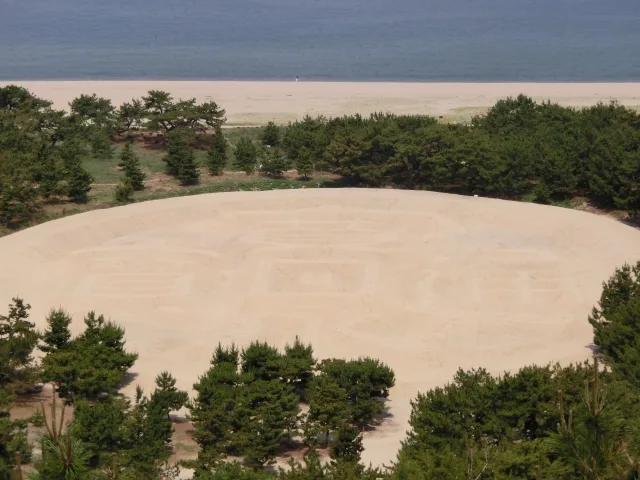
A giant sand drawing depicting a Kanei Tsuho coin from the Edo period, it’s a landmark of Kan-onji City in Kagawa Prefecture. With east-west dimensions of 122m, north-south 90m, and a circumference of 345m, it boasts a size that’s among the largest in Japan. There’s a legend that if you see this sand drawing, you’ll be healthy, live long, and never want for money.
When viewed from the observation deck at Kotohiki Park, you’ll be overwhelmed by its scale. The beautiful Seto Inland Sea spreads out in the background, creating a spectacular contrast with the white sand drawing. At night, it’s lit up, offering a different atmosphere from daytime.


コメント